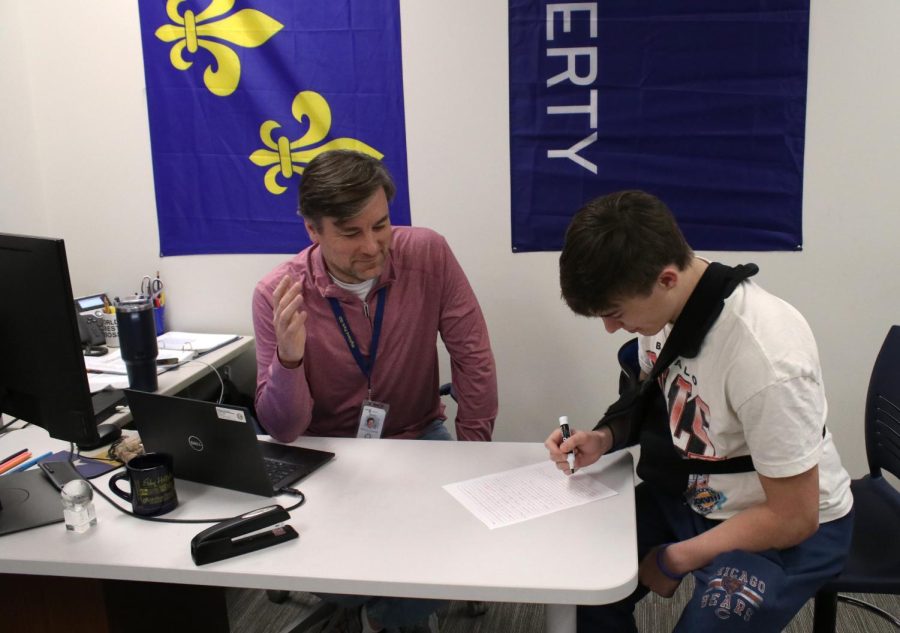The summer before her sophomore year, junior Linda Chen’s high school soccer career was cut short.
She had been playing in a college showcase in California when she tore her ACL and meniscus in the last game.
“I didn’t see my coach when I got injured, but they put me on a golf cart and drove me to a trainer that was there,” Chen said. “I think everybody knew that I had injured myself but no one knew what actually happened to my knee.”
It wasn’t until she returned home that she would learn how severe her injury was. Her injury not only forced her to quit playing soccer, but it also meant surgery and spending months rehabilitating in physical therapy.
“It was pretty hard for me to build back my quad muscle after surgery and especially since I was off of that leg for six weeks while I was on crutches,” Chen said.
Her rehab lasted more than nine months with Chen having physical therapy twice a week and while she ultimately made a full recovery, not everyone is so lucky.
On a yearly basis, 3.5 million children are injured from sports and ⅓ of all childhood injuries are sports-related, according to Stanford Medicine and Yale Medicine. Concussions, sprains, broken bones and shin splints are among the most common sports injuries, according to Texas Health Resources.
At school, sports are highly encouraged and culturally significant. Cheer sponsor Diana Nolasco says many students have a hard time finding the line between pushing themselves to succeed and overexerting themselves, which can lead to injury.
“It’s crucial when working out [to be able to tell that] something doesn’t feel right,” Nolasco said. “Always listen to your body, your body’s [going to] tell you.”
School sports have numerous precautions put in place to protect students from detrimental injuries that could potentially have lifelong effects.
For instance, all the coaches are required to have specific health and safety certifications renewed annually to continue to coach in Texas.
“It’s something we have to do every summer before we come back and that’s something that all coaches do for all sports,” assistant football coach William Corbett said.
Although injuries may seem inevitable in sports, coaches have been trained to take notice when an athlete seems off or injured.
“As a coach, some things that we look for is if someone is disoriented or if they’re holding their head,” said Nolasco. “It could be a concussion. We monitor everyone.”
The school has three athletic trainers, Jay Harris, Christal Clark and Kirk Kaps, along with two team doctors, Dr. Brett Raynor and Dr. Scott Paschall. Their job is to help athletes recover and to keep them safe.
“We’re super lucky to have three really good ATs because they cover every sport and every game,” Corbett said. “So at any given time, whoever is covering the game [is] always out there so they’re able to make an assessment.”
Sophomore Slayden Frazar has been playing sports since he was young. Between football, basketball and lacrosse, he’s been injured several times, but the athletic trainers have helped him recover and get back on the field.
“I love the trainers here,” Frazar said. “They’re super fun and they’re super great. They’ve definitely helped me during my time at HP.”
On average, parents sign children up for high-risk sports as young as five-years-old. The reason children are more susceptible to injuries than adults is because of the lack of complex motor skills, which won’t develop until after puberty. Because of this, Nolasco feels more precautions should be put in place.
“The regulations should go all the way down to the younger age groups,” Nolasco said. “It’s about protecting the bodies, protecting the growth and ensuring that they’re not moving too fast or doing too much advanced work before they’re ready for it.”
Research from Trine University explains that being overly focused on winning affects athletes’ mental and physical health, causing 48% of female athletes and 31% of male athletes to show symptoms of depression and anxiety. Many sports revolve around the idea of winning, but with the rise of injuries in sports, Nolasco believes that many athletes need to remember to prioritize their health above all.
“I think that’s a big thing in our culture, not just HP, but athletes in general,” Nolasco said. “I think sometimes we have to realize that, yes, the win is important, but it’s not as important as taking care of ourselves.”




